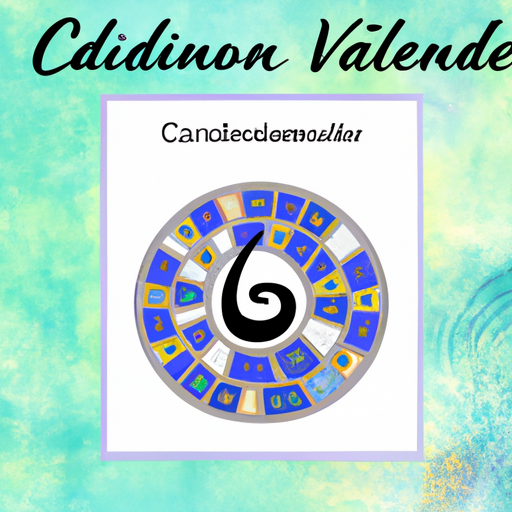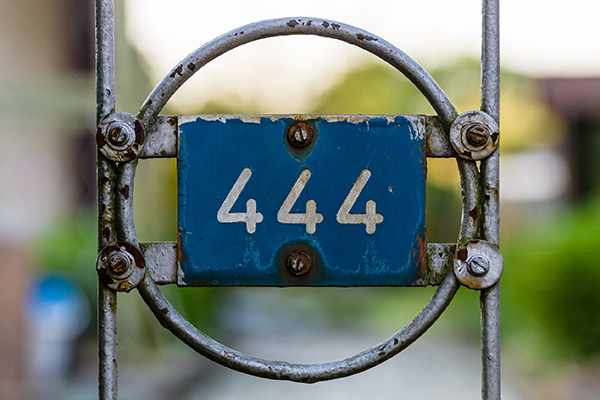 Numerology, the aged mystical discipline of numbers and their impact on our daily lives, encompasses much more than just interpreting your birth date’s significance.
Numerology, the aged mystical discipline of numbers and their impact on our daily lives, encompasses much more than just interpreting your birth date’s significance.
While many are acquainted with the life path number, which comes from one’s birth date, few understand that their known name number offers deep insights about their character, fate, and spiritual journey.
Commonly referred to as the expression number, this calculation is a fundamental aspect of numerology employed by practitioners to investigate one’s traits, potential, and life direction. Discovering this number can be enlightening and transformative.
In metaphysical terms, names carry weight; they represent energetic vibrations that embody distinct meanings and influences.
Your known name is the one you utilize in your daily interactions, whether it’s the name allocated to you at birth by your parents or a nickname that has persisted throughout your life.
The name you resonate with has an energetic essence that unveils significant aspects of your character, objectives, and the particular challenges or talents you may face in this lifetime.
Through the lens of numerology, each letter in your name corresponds to numerical values based on the Pythagorean Number Table, where every letter is matched to a number from 1 to 9. By summing the numbers related to the letters in your known name, you can reveal multiple key numbers that shed light on your character, strengths, and life mission.
The invisible quality known as a Good Name consists of the breath of numbers that speak positively of you ~ George Savile
Determining Your Known Name Number
To find out your known name number, adhere to these instructions:
Each letter of the alphabet corresponds to a number from 1 to 9 as listed below:
| 1 |
2 |
3 |
4 |
5 |
6 |
7 |
8 |
9 |
| A |
B |
C |
D |
E |
F |
G |
H |
I |
| J |
K |
L |
M |
N |
O |
P |
Q |
R |
| S |
T |
U |
V |
W |
X |
Y |
Z |
– |
To establish the numerological significance of your known name, write down the full name you use, and assign the corresponding number to each letter.
For instance, if your name is “Jane Doe,” you would attribute the following numbers to each letter:
J = 10
A = 1
N = 14
E = 5
D = 4
O = 15
E = 5
Add these numbers together:
10 + 1 + 14 + 5 + 4 + 15 + 5 = 54
Next, reduce this sum to a single-digit by adding the digits together:
5 + 4 = 9
Thus, the known name number for “Jane Doe” is 9.
A known name number of 9 indicates that Jane is most likely a compassionate, idealistic, and spiritual individual with a profound yearning to effectuate positive changes in the world.
She may also embody characteristics of a humanitarian. She seems inclined to assist others and foster positive outcomes globally. Individuals with a 9 often espouse lofty ideals and ambitions, thus Jane might gravitate toward causes advocating peace, justice, and equality.
Additionally, Nines frequently possess a rich spiritual or philosophical dimension. This suggests Jane may be interested in contemplating life’s meaning and her role in the universe. She may feel compelled to influence the world and could be attracted to professions or volunteer opportunities that enable her to aid others.
Nonetheless, Nines sometimes wrestle with feelings of inadequacy or self-doubt. They may also struggle with establishing limits and prioritizing their own well-being. Consequently, Jane’s life journey might involve surmounting these hurdles and nurturing a stronger self-awareness. Furthermore, she may need to balance her impulse to assist others with her own needs.
The Significance Of Your Known Name Number
Each known name number possesses its distinct energetic resonance and message, offering invaluable perspectives on personal development and spiritual advancement. Grasping your number can illuminate your pathway and clarify various life aspects. Below is an overview of the symbolic interpretations and implications of each number:
1 – THE LEADER
Independence, initiation, leadership, ambition, individuality.
The number 1 signifies fresh starts, individuality, and leadership qualities. It embodies self-reliance, confidence, and the motivation to succeed. Individuals linked with number 1 are often viewed as innovators, pioneers, or resolute leaders who prefer to carve their own path.
The number 1 encourages fostering independence and distinguishing oneself. It prompts you to acknowledge your uniqueness and take courageous steps towards realizing your potential.
2 – THE DIPLOMAT
Cooperation, balance, harmony, sensitivity, partnership.
The number 2 is connected to relationships, diplomacy, and emotional intelligence. It reflects the necessity for balance, teamwork, and comprehension. Individuals aligned with number 2 frequently serve as mediators or peacemakers, attuned to others’ emotions and requirements.
The energy of 2 advocates for peace, cooperation, and harmonious relationships. It highlights the significance of duality, like balancing opposing forces (light and dark, masculine and feminine).
3 – THE COMMUNICATOR
Creativity, expression, joy, sociability, inspiration.
The number 3 embodies creative expression, optimism, and joy. It is linked to communication, social engagement, and artistic abilities. Those carrying a 3 energy are often spirited, outgoing, and enthusiastic, eager to share their concepts and inspire others.
The number 3 promotes a life characterized by spontaneity and creativity. It underscores the significance of expressing oneself in various forms—whether through art, writing, or conversation—to connect with others and elevate the spirit.
4 – THE BUILDER
Structure, stability, practicality, discipline, responsibility.
Meaning: The number 4 symbolizes order, stability, and constructing solid foundations. It relates to hard work, discipline, and a pragmatic approach to life. People embodying a 4 energy tend to be stable, dependable, and systematic, placing a high value on security and long-term success.
Spiritual Implication: The essence of 4 teaches patience, concentration, and the necessity of forming solid foundations across all life areas—be it personal relationships, careers, or spiritual growth.
5 – THE FREEDOM SEEKER
Adventure, freedom, change, versatility, curiosity.
The number 5 is associated with freedom, adventure, and adaptability. It signifies a longing for variety, excitement, and novel experiences. Individuals tuned to number 5 are often curious, open-minded, and flourish in ever-changing settings.
The number 5 encourages personal liberty and exploration. It fosters flexibility and readiness to respond to life’s continual shifts, embracing the notion that growth is often fostered through new experiences.
6 – THE NURTURER
Compassion, family, responsibility, service, healing.
The number 6 symbolizes compassion, family, and service. It relates to nurturing, caregiving, and responsibility, especially in communal or familial contexts. Those with a 6 energy usually strive for harmony in their relationships and are instinctive caregivers.
The essence of 6 emphasizes the value of love, caring, and responsibility for others. It promotes healing, emotional support, and the intention to create harmony within both personal and collective spaces.
7 – THE SEEKER
Introspection, spirituality, wisdom, analysis, mystery.
The number 7 is frequently seen as the numeral of spiritual exploration and profound introspection. It associates with intellectual pursuits, mystical wisdom, and the quest for truth. Those resonating with number 7 tend to be reflective, analytical, and captivated by spiritual or philosophical inquiries.
The number 7 symbolizes the inward journey and the pursuit of spiritual knowledge. It advocates for meditation, self-examination, and seeking deeper truths beyond material existence.
8 – THE POWERHOUSE
Authority, success, ambition, material mastery, leadership.
The number 8 connects with power, ambition, and material prosperity. It represents the capability to attain wealth, status, and influence through perseverance and determination. Individuals possessing this number often assume substantial leadership roles and are adept at mastering both physical and financial domains.
The essence of 8 imparts lessons on maintaining balance between material gains and spiritual pursuits. It encourages the judicious employment of power and managing abundance while staying grounded in personal ethics.
9 – THE HUMANITARIAN
Compassion, universal love, philanthropy, closure, enlightenment.
The number 9 represents universal love, compassion, and humanitarianism. It is associated with selflessness, empathy, and a commitment to improving the world. Individuals resonating with a 9 frequency often gravitate toward charitable endeavors, global initiatives, or spiritual enlightenment.
The number 9 signifies the closure of a cycle and a summons to serve humanity with love and compassion. It encourages the acceptance of endings as fresh starts while aligning personal endeavors with a greater purpose for the common good.
The Influence of Name Changes and Nicknames
Interestingly, numerology also explores how changes to names or the adoption of nicknames modify your energetic framework. If you’ve had various names throughout your life—perhaps childhood nicknames or names acquired through marriage—each name carries a distinct vibrational energy that subtly influences your life experiences, perspectives, relationships, and spiritual path.
Numerologists often recommend that if you’re thinking of changing your name or frequently use a nickname, it’s beneficial to calculate the numerology of both the full and abbreviated versions to grasp how each impacts your journey and persona.
Individuals often select new names or variations due to significant life changes reflecting personal or spiritual evolution, identity transitions, karmic healing, or a fresh chapter of their soul’s journey. This could arise from marriage, spiritual awakening, career shifts, embracing one’s true purpose, or overcoming substantial life challenges or personal traumas.
The newly chosen name often symbolizes the individual’s evolving self, embodying the qualities or energies they aspire to manifest as they progress. In numerous cultures and spiritual disciplines, altering or adjusting one’s name is viewed as an intentional act aligning with a heightened purpose, newfound liberty, or greater personal empowerment.
For instance, a woman named “Jane Doe” who later adopts the name “Janey Doe-Smith” through marriage and personal preference will experience a transformation in her core numbers. This doesn’t imply that the numerology of her former name loses its relevance, but rather the new name unveils fresh opportunities for growth and change. The energy associated with “Liz Doe-Smith” introduces distinct traits in her character, her choices in life, and her interactions with the environment and people around her.
While “Jane Doe” has a known name number of 9, “Janey Doe-Smith” results in a number of 4. This indicates a shift from compassionate, humanitarian attributes (9) to a more systematic, disciplined, and practical frequency (4).
Thus, her new adopted name “Janey Doe-Smith” suggests a different energetic influence in her life centered on stability and laying strong foundations, whereas “Jane Doe” focused on compassion and serving humanity at large. Her new known name number may also signify a transition from idealism towards a more grounded and pragmatic outlook. The new Janey probably seeks more stability, structure, and a more realistic approach to her existence.
Numerology serves as a potent tool for self-discovery, assisting in unveiling the concealed patterns that influence your experiences. Whether you’re pursuing personal development, clarifying your life’s objectives, or seeking profound spiritual comprehension, the numerology associated with your known name offers valuable insights for your journey.
So, the next time you present yourself, remember: your name is far more than just a label—it is a key to unlocking the mysteries of your soul’s voyage.
|
 About The Author: Mystic Shelley About The Author: Mystic Shelley
Mystic Shelley is a five-star psychic, Reiki healer, clairvoyant and empathic reader. She provides her clients with sincere insights regarding past, present, and future events, aided by her trusted guides. She specializes in love, relationships, career, finance, and all areas of life. Although gifted with psychic abilities from birth, Mystic Shelley initially hesitated to embrace her talents. A serendipitous meeting with a renowned psychic in her 30s led her on a path to unlock those gifts. Guided by her mentor, she expanded her natural abilities, enhancing her skills through experience. Today, she enjoys a growing clientele who praise her work. Furthermore, she assists fellow psychics in cultivating their own abilities. For straightforward and authentic insights, schedule a reading with Mystic Shelley at PsychicAccess.com now.
|
Uncover the Hidden Significances Behind Your Known Name Number
Have you ever pondered whether there’s a profound meaning tied to your name? Numerous cultures assert that names possess significant power and can shape an individual’s life. One way to delve deeper into this notion is by analyzing the numerological value of your name. Numerology, an age-old practice, assigns numerical values to letters, enabling us to discover concealed meanings and insights about ourselves. In this article, we will explore the realm of numerology and delve into the hidden significances behind your known name number.
To ascertain your known name number, you must allocate a numerical value to each character in your name. In numerology, the numbers 1 through 9 are linked with specific traits and qualities. For instance, the number 1 signifies independence, leadership, and creativity, while the number 2 embodies harmony, cooperation, and diplomacy. By adding the numerical values of the letters in your name and reducing the total to a single digit, you can establish your known name number.
Once you calculate your known name number, you can begin exploring its hidden significances. Each number has its unique relevance and can furnish invaluable insights into your personality, strengths, and challenges. Let’s examine the meanings associated with each known name number:
1 – If your known name number is 1, you have remarkable leadership traits and a pioneering essence. You are independent, ambitious, and possess the motivation to achieve. However, be cautious of your tendencies toward selfishness and excessive competition.
2 – A known name number of 2 suggests that you are a peacemaker and an innate diplomat. Your gentle and nurturing demeanor makes you an ideal mediator and collaborative partner. Be mindful of your propensity to be overly sensitive and indecisive at times.
3 – If your known name number is 3, you are imaginative, expressive, and possess a natural aptitude for communication. Your vibrant spirit and zest for life are evident. However, be wary of your tendency toward being scattered and superficial.
4 – A known name number of 4 implies that you are pragmatic, dependable, and industrious. You possess a keen sense of responsibility and excel at organizing and strategizing. Remain conscious of your inclination towards rigidity and inflexibility.
5 – If your known name number is 5, you are a free spirit, adaptable, and yearn for freedom. Your magnetic personality thrives on change and diversification. However, be cautious regarding your tendency to be impulsive and restless.
6 – A known name number of 6 indicates that you are supportive, caring, and carry a deep sense of accountability for others. You are a natural caretaker and harbor a profound affection for family and community. Be aware of your tendency to become overly controlling and possessive.
7 – If your known name number is 7, you are perceptive, introspective, and have an insatiable quest for knowledge. You possess a rich spiritual component and enjoy solitude and deep reflection. However, be wary of your inclination to become distant and detached from others.
8 – A known name number of 8 suggests that you are driven, self-assured, and possess a strong hunger for success and material wealth. Your leadership abilities are commendable, and you possess a natural affinity for business. Stay vigilant of your tendency towards greed and material excess.
9 – If your known name number is 9, you are empathetic, selfless, and harbor a deep drive to foster positive change in the world. You demonstrate a significant sense of justice and are motivated by the desire to uplift others. Be mindful of your tendency towards excessive idealism and self-neglect.
By exploring the nuanced significances behind your known name number, you can gain an enriched understanding of your identity and your life’s mission. Numerology unveils an intriguing glimpse into the potency of names and the impact they can have on our lives. So, take a moment to calculate your known name number and uncover the hidden significances associated with your name. You may be pleasantly surprised by your discoveries! Continue reading →















